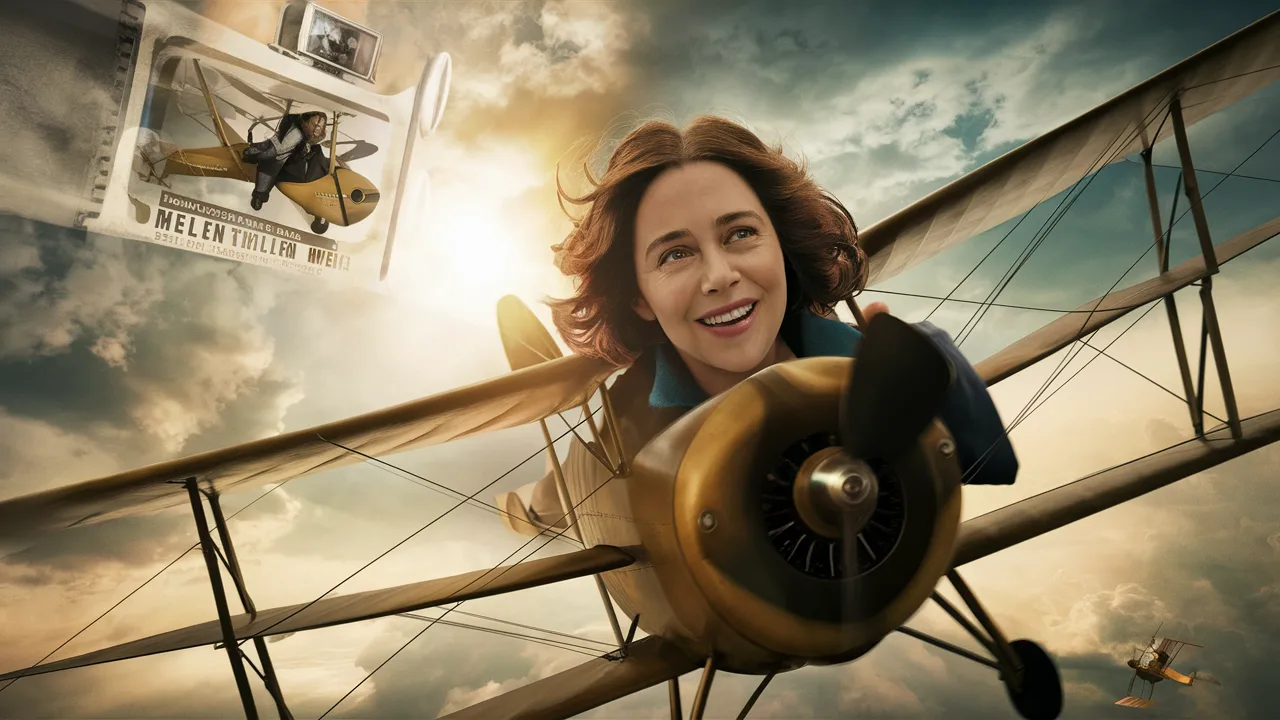When most people hear the name Helen Keller, they think of her as a trailblazing advocate for people with disabilities, a gifted writer, and a symbol of determination. What is less widely discussed is an extraordinary episode in her life when she experienced the thrill of flight. This remarkable story is not just about the physical act of flying—it’s about breaking barriers and showing that limits are often just perceptions.
A Life Already Full of Achievements
Before stepping into an aircraft, Helen Keller had already overcome challenges that would seem impossible to many. Losing both her sight and hearing at a young age, she learned to communicate through the dedication of her teacher, Anne Sullivan. She graduated from college, wrote several books, and traveled widely to speak about disability rights. Her determination to experience life fully extended beyond education and advocacy—it also touched on adventures many never imagined she would pursue.
The Early Fascination with Aviation
Aviation was still a young field during Keller’s lifetime. The first powered flight by the Wright brothers had taken place only in 1903, and by the 1910s and 1920s, airplanes were still considered a novelty. Many people were nervous about flying. For Keller, however, the idea of flight represented freedom and new possibilities. She was curious about what it might feel like to soar through the air, and she never let physical limitations stand in the way of satisfying her curiosity.
Her First Flight Experience
Helen Keller’s first time in an airplane as a passenger happened in 1919. This was during the making of Deliverance, a silent film based on her own life in which she appeared as herself. Air travel at the time was nothing like today—open cockpits, noisy engines, and a raw sense of adventure filled the air. For someone without sight or hearing, the experience was about touch and movement: the vibration of the engine, the rush of wind, and the shifting pressure as the plane climbed.
Keller later described how she could sense the changes in altitude through the movement of air across her skin and the way the craft tilted during turns. It was a rare opportunity to connect with the mechanics of flight in a way few could imagine.
The Day Helen Keller Took the Controls
Years later, Helen Keller’s flying story reached its most extraordinary moment: she actually piloted an aircraft. It happened in 1946 during a visit to Europe. While traveling to promote support for people with disabilities, Keller and her companion, Polly Thomson, boarded a flight with a small crew. At one point during the journey, the pilot invited Keller to take the controls.
Guided by the pilot’s instructions and using her finely tuned sense of touch, Keller placed her hands on the control yoke. She was able to feel the plane’s responses—slight shifts in air pressure and the feedback from the control surfaces. By making gentle movements, she kept the aircraft steady and on course. The crew later remarked how smoothly she flew.
Understanding How She Could Fly
For many, the idea of a deafblind woman flying a plane seems almost impossible. But Keller’s unique way of interacting with the world made it feasible. She had developed a deep sensitivity to vibrations and motion. Airplanes transmit constant tactile feedback: the hum of the engine, the pressure changes in turns, and the resistance of the controls. By relying on these cues and the pilot’s guidance, Keller could make controlled adjustments.
This wasn’t about technical flying skills in the modern sense—it was a symbolic yet real demonstration of capability. It showed that given the chance, people with disabilities could take part in experiences traditionally thought to be off-limits.
The Significance of the Moment
Helen Keller flying a plane was not widely publicized at the time, but for those who knew the story, it was powerful. It was a message to the world that barriers exist mainly in our minds. Her flight represented the courage to embrace the unfamiliar, the determination to live fully, and the belief that everyone deserves the chance to explore life’s possibilities.
Even though her time at the controls was brief, it stands as one of the many ways she pushed boundaries. Keller had always said that life was either a daring adventure or nothing at all. This moment proved she lived by that belief.
Legacy of Her Aviation Story
Today, Keller’s flight is often overshadowed by her other accomplishments, but it deserves a place in history. It’s not just about the novelty of the event—it’s about what it symbolizes. Aviation in the mid-20th century was still considered risky, and many able-bodied people hesitated to fly. Keller’s willingness to step into the cockpit showed that fear could be overcome and that experiences should be open to everyone.
Her story continues to inspire not only those with disabilities but also anyone who feels limited by circumstances. It serves as a reminder that challenges are not stop signs; they are opportunities to find creative solutions.
Final Thoughts
The day Helen Keller flew a plane was more than an unusual footnote in her life—it was a statement. It told the world that ability is not measured by what you can see or hear, but by the courage to try. Whether as a passenger in 1919 or at the controls years later, Keller embraced the sky with the same determination she brought to every aspect of her life.
Her flight remains a shining example of what can happen when opportunity meets fearless curiosity. It challenges all of us to ask: if Helen Keller could fly a plane, what limits are we placing on ourselves?



